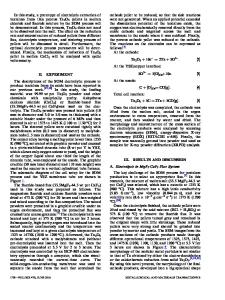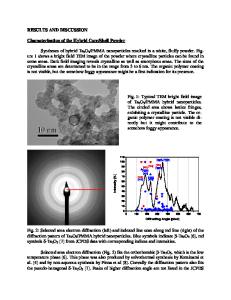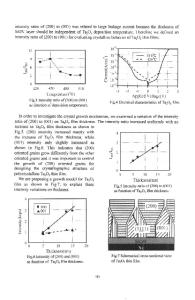Ta 2 O 5 NTs-TiO 2 nanodots heterostructure photocatalyst material for enhanced photodegradation and photoelectrochemica
- PDF / 1,441,664 Bytes
- 10 Pages / 547.087 x 737.008 pts Page_size
- 69 Downloads / 396 Views
RESEARCH PAPER
Ta2O5 NTs-TiO2 nanodots heterostructure photocatalyst material for enhanced photodegradation and photoelectrochemical performance under simulated solar light Sainan Zhang & Min Feng & Ying Liu & Daoai Wang Received: 27 August 2020 / Accepted: 24 November 2020 # Springer Nature B.V. 2020
Abstract Ta2O5-TiO2 heterojunction photocatalysts with a structure of TiO2 nanodots deposited on Ta2O5 nanotube (NTs) were prepared by anodization and in situ growth methods following annealing treatment. The heterojunction photocatalytic material exhibited enhanced photodegradation behavior of methylene blue (MB) and photoelectrochemical water splitting performance under simulated solar light. The degradation rate of MB and photocurrent density of heterojunction is 3.99 and 8.33 times higher than that of pure Ta2O5 NTs respectively. The synergetic effect of the phase heterojunction and highly ordered structure increased the specific surface area and improved the separation and transmission efficiency of photogenerated electrons and holes, thereby enhancing the photocatalytic activities. Hence, Ta2O5 TNs-TiO2 nanodots heterojunction has promising application in the fields of photodegradation, photoelectrochemical water splitting, solar cells, and other photocatalytic devices.
S. Zhang : Y. Liu (*) Institute of Materials Science and Engineering, Ocean University of China, Qingdao 266100, China e-mail: [email protected] S. Zhang : M. Feng : D. Wang Qingdao Center of Resource Chemistry and New Materials, Qingdao 266100, China M. Feng : D. Wang State Key Laboratory of Solid Lubrication, Lanzhou Institute of Chemical Physics, Chinese Academy of Sciences, Lanzhou 730000, China
Keywords Ta2O5 TNs-TiO2 nanodots . Photodegradation . Photoelectrochemical . Environmental pollution
Introduction Environmental pollution and energy crisis are two serious problems faced by human beings. Hydrogen energy has gained increasing attention as an ideal clean energy source. However, hydrogen energy is a secondary energy source that is produced by consuming primary energy (Fujishima and Honda 1972; Elias et al. 2013; Liu et al. 2017; Zhang et al. 2017). Traditional industrial hydrogen production mainly involves methane reforming, which consumes fossil energy and emits CO2, which usually cause energy and the environment issues. Hydrogen is produced from water by photolysis through photocatalytic semiconductor materials and solar energy and then used as energy to turn into clean water; this virtuous cycle is an ideal way to possibly solve energy and environmental problems (Chen et al. 2015; Feng et al. 2018; Wei et al. 2019). Ta2O5 has a unique feature in photocatalysis due to its wide bandgap of 3.9 eV, it is widely used in optical and electronic devices due to its high dielectric constant, good photoelectric properties, and good thermal and chemical stability, the conduction band of Ta2O5 is more negative, resulting higher amount of H2 generation (Sayama and Arakawa 1994; Hideki and Akihiko 1998; Chun et al. 2003; Hur 2019; Liu et al
Data Loading...










